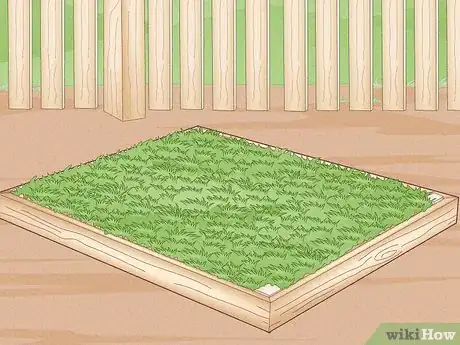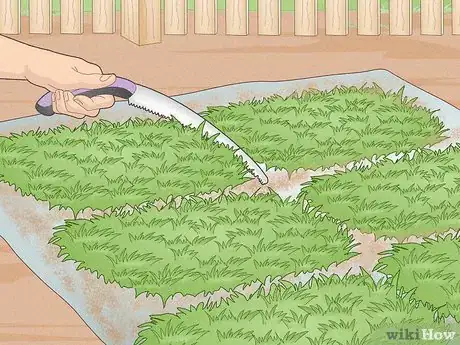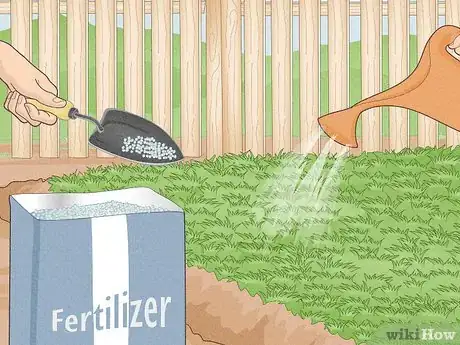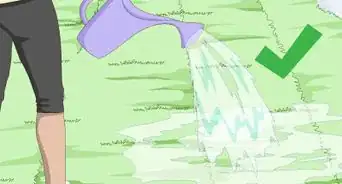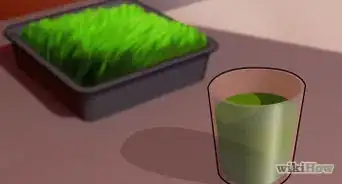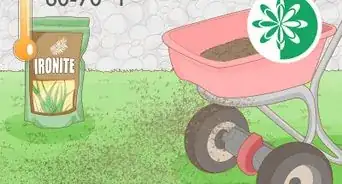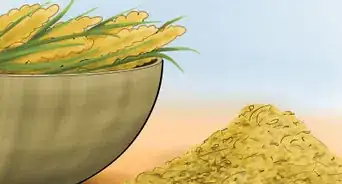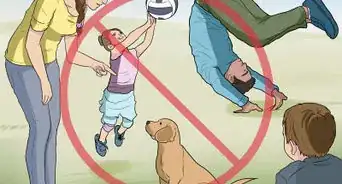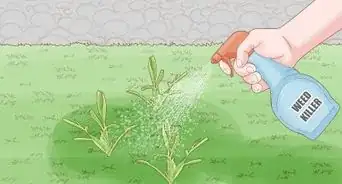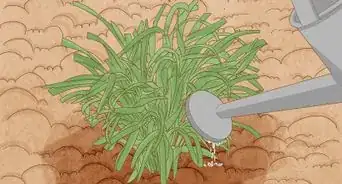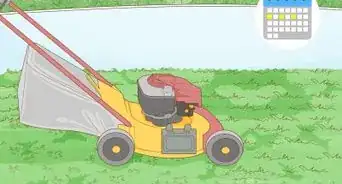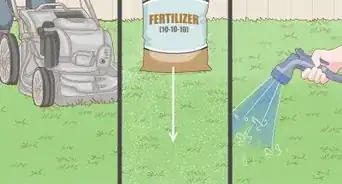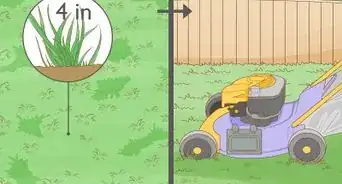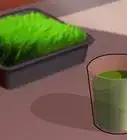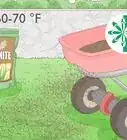This article was co-authored by Grant Wallace. Grant Wallace is a Landscaper and Owner of Grantlanta Lawn in Atlanta, Georgia. With over seven years of experience, he specializes in lawn maintenance and landscape installation. In 2012, he earned his BA from the University of West Georgia. Grant has been profiled in Shoutout Atlanta, Canvas Rebel, and Voyage ATL.
This article has been viewed 56,694 times.
Ornamental grasses are popular landscape additions because they have few pest problems and are easy to grow. They can provide textural contrast, screening and winter interest to the landscape. Most landscape grasses are clump-forming and will not spread to other areas although the clumps will get bigger each year. A few types of landscape grasses spread by rhizomes or stolons and some of these can become quite invasive, taking over the landscape. Here are some ways to keep landscape grasses from spreading.
Steps
Controlling Running or Spreading Grasses
-
1Confine the root system.
- Cut the bottom out of a large plastic pot. Use heavy shears or a stout knife to cut the bottom out. The pot should be 12” (30.5 cm) or more across and at least 8” (20.3 cm) deep.
- Bury the pot where you want the grass.
- Center the grass in the pot. Use soil from the hole you dug to sink the pot to fill the pot.
- Use a cement drain tile, metal culvert section or plastic drain tile without perforations buried in the ground to confine the grass roots if you don’t have a large plastic pot.
- Set pots or other items confining roots into the soil so that you leave about 1” (2.5 cm) of the rim above ground.
- Every few years you will need to lift the container and divide the grass plant to keep it from becoming root bound or breaking the container.
-
2Plant the grass in a raised bed with walls or cement-surrounded bed. It will have the spreading confined to a certain area.Advertisement
-
3Use an air moat and mowing to confine the grass.[1]
- At the edge of the area where you wish to confine the grass dig a trench 6” (15.2 cm) across and 8” (20.3cm) deep. This air gap generally prevents rhizomes and stolons from crossing.
- Mow the edge of moat frequently in case the grasses manage to cross it.
Keeping Clumping Grasses from Spreading Too Much
-
1Divide your clumps.[2]
- In early spring burn or cut off the dried grass leaves from the previous season if you did not do it in the fall.
- Wait for new grass shoots to begin growing.
- When the new shoots are still small dig around the whole clump of grass.
- Spread a tarp or sheet of plastic on the ground.
- Lift the clump of grass and place it on the tarp or plastic.
- Using a pruning saw or a chain saw simply cut the grass root clump into chunks. You can quarter it or make more or less cuts depending on the size of the root system.
- Replant what you want of the smaller root pieces and give the rest away.
- Discard the center of the old root system if it has no new grass shoots growing from it. Some clumps die out in the center.
-
2Use less fertilizer and water.
- Grasses won’t grow as much if you skip the fertilizer and water only when it’s very dry.
- If the plant’s growth yellows or looks spindly you may need to resume watering and fertilizer.
Expert Q&A
-
QuestionShould you have grass next to your house?
 Grant WallaceGrant Wallace is a Landscaper and Owner of Grantlanta Lawn in Atlanta, Georgia. With over seven years of experience, he specializes in lawn maintenance and landscape installation. In 2012, he earned his BA from the University of West Georgia. Grant has been profiled in Shoutout Atlanta, Canvas Rebel, and Voyage ATL.
Grant WallaceGrant Wallace is a Landscaper and Owner of Grantlanta Lawn in Atlanta, Georgia. With over seven years of experience, he specializes in lawn maintenance and landscape installation. In 2012, he earned his BA from the University of West Georgia. Grant has been profiled in Shoutout Atlanta, Canvas Rebel, and Voyage ATL.
Landscaper I believe there's a bit of a gray area in there. You probably don't want to put the plants right on top of the house, especially if it's something with vines or trees, because that can grow onto the house and will add moisture to your foundation. That said, if you want grass near your house, you can try grading the ground so the water is tilted away from your home..
I believe there's a bit of a gray area in there. You probably don't want to put the plants right on top of the house, especially if it's something with vines or trees, because that can grow onto the house and will add moisture to your foundation. That said, if you want grass near your house, you can try grading the ground so the water is tilted away from your home..
Warnings
- Whether you mind them spreading or not, non- native ornamental grasses should not be allowed to spread to natural areas. Some states have listed several ornamental grasses on the noxious or invasive plant list and you should avoid planting those grasses in your state.⧼thumbs_response⧽
- Don’t plant large ornamental grasses up close to buildings. The dry foliage of grasses is extremely flammable. If you live where wildfires are possible large ornamental grasses should be used with great care and cut down and removed when they dry out.⧼thumbs_response⧽
Things You’ll Need
- Containers 12” or more wide
- Heavy duty shears
- Pruning saw or chainsaw
- Shovel
Expert Interview

Thanks for reading our article! If you'd like to learn more about keeping grass from spreading, check out our in-depth interview with Grant Wallace.
References
- ↑ https://www.latimes.com/archives/la-xpm-1999-jul-17-hm-56743-story.html
- ↑ https://www.youtube.com/watch?v=3cgIoQPg2GI
- https://www.latimes.com/archives/la-xpm-1999-jul-17-hm-56743-story.html
- https://web.extension.illinois.edu/grasses/understanding.cfm
- https://extension2.missouri.edu/g6661
- http://northcoastgardening.com/2014/01/how-to-prune-ornamental-grass/

